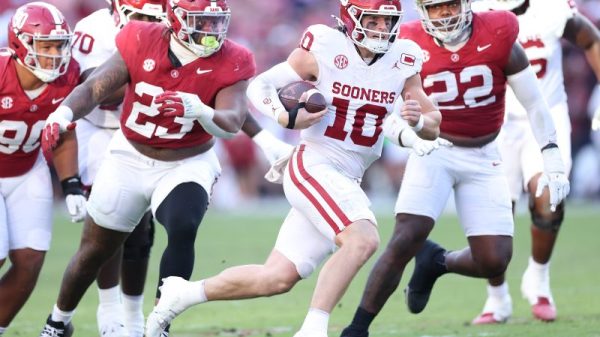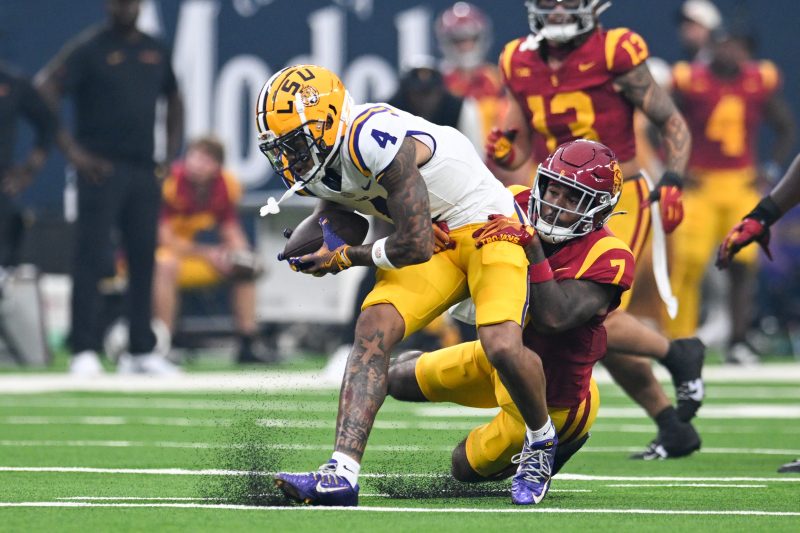This ordeal began nearly 15 years ago, an 11th hour paradigm shift in conference realignment falling apart because emotion clouded college football business.
Emotion, everyone, is the death of business.
Just like it was in 2010, when the Pac-10 failed to land six schools from the mortally wounded Big 12 – Texas, Texas A&M, Oklahoma, Oklahoma State, Texas Tech, Colorado – and become the nation’s first 16-team super conference.
That singular failure led to the eventual demise of both the Big 12 as we knew it then, and eventually the Pac-12. And birthed today’s SEC and Big Ten super conferences.
The SEC and Big Ten didn’t set in motion what is now their clear takeover of college football (and by proxy, college sports). But you better believe they’ll do everything within legal constructs to end it on their terms.
The moves begin with partnerships that could have never been dreamed of only a handful of years ago, including but not limited to: a 14- or 16-team College Football Playoff in 2026 with four automatic qualifying spots each for the SEC and Big Ten, and the two super conferences pooling their media rights revenue and earning significantly more than they currently do (about $2 billion annually combined).
This is much more than a standalone nonconference scheduling agreement that USA TODAY Sports reported Monday could add as many as 20 games between the conferences to increase media rights revenue. That’s a drop in the bucket compared to the projected loss of revenue going to athletes down the road, which, more than anything, is the reason for this partnership.
This working agreement of convenience between the SEC and the Big Ten could eventually lead to a product that closely resembles the NFL, and leaves other Bowl Subdivision conferences in their financial wake. Pooled media rights and structured scheduling could mirror the NFL with two different conferences, scheduling overlap and a playoff. Or in this case, a playoff that includes the remaining FBS conferences.
SMART MONEY: Why Georgia has the highest-paid college football coach
BOWL PROJECTIONS: Alabama knocked out of playoff in favor of SEC team
This isn’t a cash grab for the two wealthiest Power Four conferences, it’s survival. At the center of it all are billions lost in the House legal case, and an estimated $20-23 million annual expense of shared revenue agreements with players beginning as early as the 2025 season.
Think about this: on shared revenue alone and using the higher end of the monetary projection, the 34 teams in the SEC and Big Ten will spend nearly three quarters of a billion dollars combined annually ($782,000,000) on player salaries.
That’s an astounding number for a group of schools that currently give players a “cost of attendance” stipend that pays as much as $6,000 annually. Simple math – 34 teams, 85 scholarship players per team, $6,000 per player – reveals estimated payments of $17.34 million annually.
In other words, the SEC and Big Ten are currently chasing a projected 2025 budget shortfall of $764,660,000.
Suddenly the new friendship among former conference rivals is clear and concise. The object is to survive, not supplement every other FBS conference ― while giving 15-20 percent of value to private equity investors who, out of the goodness of their hearts, have offered to financially support a new league. You know, for their (un)fair share.
I’m gonna puke.
There will be conferences that are forced to use private equity to stay at the elite level of college football, or at least attempt to compete at the same level as the SEC and Big Ten. There could also be a point where conferences fold under the weight of the expense of paying players, and then separate divisions will likely form.
It’s the philosophical question that hangs over the moment: by joining forces and searching for ways to generate revenue to offset future expenses, have the SEC and Big Ten left the rest of college football behind?
More than three decades ago, long before the first iteration of the College Football Playoff and before the controversial Bowl Championship Series postseason, then-WAC commissioner Karl Benson was speaking to then-Big Ten commissioner Jim Delany at a meeting of Division I commissioners.
Delany was the most powerful man in college sports at the time, and one of the architects of the ever-evolving postseason from the Bowl Coalition, to the Bowl Alliance, to the Bowl Championship Series. All three formats attempted, in their own way, to form a coalition of bowls that allowed the top two teams to play in a national championship game.
The commissioners met as the BCS and its controversial formula was developing, and Benson was attempting to get greater access for the smaller WAC (which eventually morphed into the Mountain West Conference).
“We just want a spot on the stage,” Benson told Delany.
To which Delany responded, “We built the stage.”
It’s business, everyone. There is no room for emotion.
Matt Hayes is the senior national college football writer for USA TODAY Sports Network. Follow him on X @MattHayesCFB



























